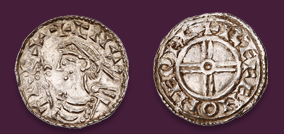
Auction: 312 - Numismatic Collector's Series Sale
Lot: 1556
Massive Senora de Atocha Silver Bar.The StoryWhile sunken treasure and their recovery, seems a topic that make the eyes of young and old light up with enchantment, few actual recoveries can match the allure of the Nuestra Senora de Atocha. While the wreck still remains the gold standard in terms of popularity, and many are familiar with the accounts of its sinking and eventual recovery, the offering of a relic with the magnitude the present offering does deserve brief retelling. In 1622 the Atocha, and a fleet of ships started their voyage from a Spanish-owned port to collect and ultimately transport material back to the motherland. Upon completion of the portside duties, the Atocha rendezvoused in Havana harbor with what became a 28 ship convey, and, six weeks behind schedule, on September 4th, finally made its last departure for Spain. As luck would have it, four days later, the fleet would encounter a significant hurricane west of Key West, which would deal the accompanying Santa Margarita and Atocha a mortal blow - damaging the hull beyond repair and quickly sinking its valuable haul. Immediately, further Spanish ships were dispatched to salvage whatever possible, but the Santa Margarita was the only ship to be located and the treasure of the Atocha would eventually be forgotten.Now, fast forward 363 years to 1985. After 16 years of combing the sea floor for sunken shipwrecks, treasure hunter Mel Fisher finally found his giant. In total, the value thus far recovered sits in excess of 450 million dollars and included over 40 tons of gold and silver including coins and 962 silver bars. Massive headlines followed, making the Atocha nearly a household name, and beginning in September of 1987 at Caesar´s Palace in Las Vegas, many of these treasure would become available for the public´s bid. The Silver Bars As previously mentioned, 962 silver ingots of over 1000 on the ship´s original manifest that currently resides in Seville Spain, have been recorded as recovered from Mel Fisher´s enterprise. These bars vary in size significantly with the largest of the bars weighing in at a staggering 100+ pounds. While not present on all recovered specimens, many were part of an official manifest and carry accompanying marks that tell their history. These marks many times include a Roman numeral foundry date, ingot number, silversmith´s mark, silver purity, assayer stamp, assayer´s bite, owner´s and shipper´s initials, as well as tax stamps to certify that the King´s fifth has been paid.Bar SpecificsThe present bar is among the group of larger bars to be recovered with an impressive weight of 86 troy pounds and 9.28 ounces. The uniformly gray colored bar measures 34.5cm long x 13cm wide x 9cm deep. Impressed into the top of the bar are a number of easily discernable marks. Stamped at top center reads "IIIIUCCXXXIX" and translates as the bar number 4239 (IIIU is shorthand for MMMM meaning four thousand). From the original shipping register, this bar matches to PB236. The bars purity is stamped at bottom center as "IIUCCCLXXX" or 2380 (.9917 pure silver) of a total 2400 maximum purity. The assayer stamp lies directly to its right. Directly above, three round stamp impressions are visible, signaling the king had received his 20% tax on this bar and to their left the assayer´s "bite" where purity was tested. At the top left, a "V" shaped mark represents the silvermaster´s mark. Various other symbols are present and represent the owner or shipper. While faint, the foundry date of 1621 sits partially beneath one of these symbols at left. The certificate of authenticity from Mel Fisher´s Treasures, L.L.C that accompanies the bar adds that the the recovery date was December 31, 1985 and assigns a class factor of 1, the highest quality associated with the ships recovered treasure. Case for OwnershipWith nearly 1000 bars recovered, conventional wisdom would suggest that many have been kept and are available as relics of the world´s most famous shipwreck recovery. However, with a little investigation, much evidence suggests the contrary. First on the list of evidence were the distribution methods for the bars. While many did end up in the hands of shipwreck aficionados or numismatic-minded individuals, Mel Fisher would also use the treasurer´s loot as payment to investors in the project. As a result, many that came into ownership of these bars surely melted them and took the proceeds as a long awaited payday. Additionally, with the rise in the silver bullion prices over the past years, many other owners were no doubt tempted to do the same. At current, some experts factor a survival of less than 50% for these impressive pieces. Further take into account that many bars were small and poorly marked, and the number of truly collectible specimens in existence is further reduced. As was alluded to earlier, the present bar is fully and boldly marked and must have been among the most presentable bars to make it off the sea floor. Parley the bar´s appearance with the increasing disappearance of bars of similar class and the underlying historic significance of this treasure, and we see a compelling numismatic reason for ownership. Of course, the intrinsic value cannot be dismissed either. For the investor in silver, this bar offers an incredible opportunity for future appreciation, while having a rarely rivaled display piece during the wait. In culmination, the present bar is an exhibit of staggering importance, which no matter the angle, results in seldom-available opportunity.
Sold for
$40,000




